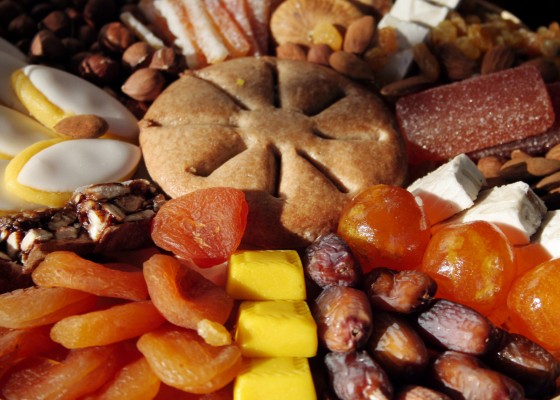Here at Boutemy, we are very attached to our provençal roots and like to share our traditions with our clients.
One tradition particularly close to our heart is Christmas Eve’s 13 desserts. The subject isn’t timely, I hear you tell me, but since there are fewer of you visiting us during the winter, we wanted to talk about it on the blog.
Everything starts with the chacho-fio (literally “setting fire”) when the oldest and the youngest child of the family put a fruit tree log in the fire.
After having gone around table three times, they place the log, previously soaked in mulled wine, on the embers and speak sacramental words when the the fire starts.The log will burn until midnight and then will be ignited in the same manner every night until the new year.
After this ritual, it is time to move on to the big supper, a lean (without meat) but very hearty meal. There are 7 dishes representing the 7 wounds of Christ, made exclusively of local products, different depending on whether you are on the coast or in the backcountry.
This begins by the aigo boulido (“water boiled with garlic” in provençal), the meal continues with fish dishes like cod in raito (provençal tomato sauce) and spinach escargots.
The surrounding mise-en-scène is most important: a table dressed on 3 tablecloths where 3 candles are placed. Thirteen breads accompany the dishes and commemorate the Last Supper. Finally, a place is set and left empty for the travelling man who may come knock at the door, it is the poor man’s place.
At the end of the meal, we eat the 13 desserts. It is certainly the most respected tradition today and even though we do not all observe the chacho-fio and the big supper, we do observe this custom.
Though the number is always the same, the desserts may vary. There are, however, some staples:
- The gibacié: a flour cake with olive oil and orange flower. Other names include: fougasse or pompe à huile (literally “oil pump”)
- White and black nougats: made with honey, almonds and sugar. To make a white and creamy nougat, egg whites are added to the mix; as for black nougat, it remains crunchy and brown in colour.
- The four beggars: symbolize the 4 great Christian Mendicant Orders (the members of which spread the gospel and help the poor). The desserts are: almonds for the Dominicans, raisins for the Augustinians, figs for the Franciscans, and hazelnuts for the Carmelites.
- Fruit and candy: depending on taste, apples, pears, grapes, oranges, honeydew melons, mandarin oranges, plums, dates, jam or quince jelly, calissons (speciality of Aix en Provence), candied fruit, and prunes are served. To these are added each village’s specialities: panade (apple pie), oreillettes (my all time favourites), pine nut cookies…
I hope you found this article about our local Christmas traditions helpful. In our next article, we’ll introduce to « Les Santons de Provence » (hint: they are a great present idea).

